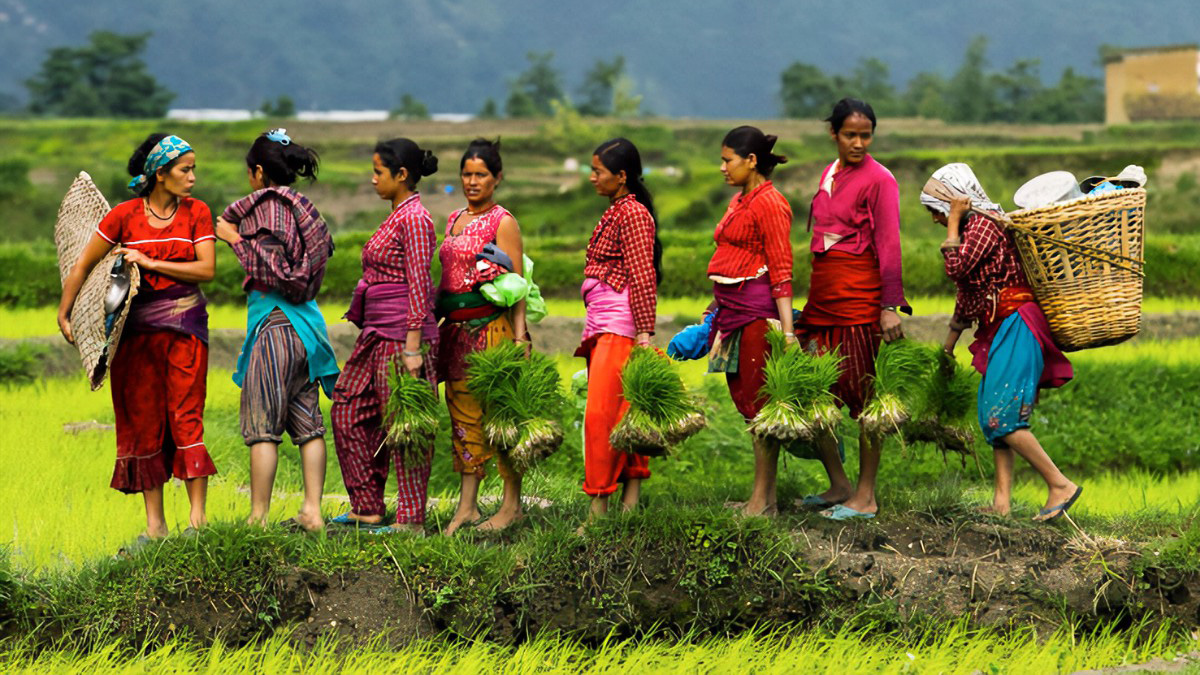
Nepal’s Import Dependency, Government Strategies, and the Future of Agriculture

Nepal, a nation steeped in agricultural traditions, finds itself at a crossroads as it grapples with an escalating reliance on imports for crucial agricultural commodities. Even basic staples like rice, corn, wheat, dairy products, tea, lentils, mushrooms, fish, meat, and edible oil are flooding the market from foreign sources due to the local production’s inability to meet the burgeoning demand. This article delves deep into the multifaceted issues plaguing Nepal’s agriculture, exploring import trends, government initiatives, challenges faced by farmers, and potential strategies for a sustainable future.
Import Trends and Government Initiatives:
The Department of Customs discloses alarming statistics, indicating that Nepal imported agricultural products worth a staggering Rs 327 billion in the fiscal year 2022/23. Despite the government’s purported efforts to boost local production, these numbers paint a stark reality of the challenges faced by the agriculture sector. Govinda Prasad Sharma, Secretary of the Ministry of Agriculture and Livestock Development, acknowledges the uphill battle, emphasizing the government’s commitment to increasing farm output.
However, a closer look at government data reveals a different narrative. Agricultural production is not only on the decline, but the allure of farming is waning among the youth. A recent ministry study exposes an increase in fallow land across the nation, attributed to a diminishing interest in agriculture among the younger generation. Despite budgetary allocations exceeding Rs 58.98 billion for the current fiscal year, the effectiveness of these programs remains questionable.
Challenges Faced by Farmers:
Farmers in Nepal confront a myriad of challenges that hinder their ability to contribute to the nation’s food security. From a lack of market access to the struggle for fair prices, the agricultural landscape is fraught with difficulties. The Kalimati Fruit and Vegetable Market, Nepal’s largest, is a glaring example, relying heavily on Indian produce to meet 60% of the country’s vegetable demand. Farmers in regions like Kavre, Chitwan, Makwanpur, and certain Tarai districts are forced to discard tomatoes, cucumbers, and cabbages due to inadequate market access.
Agricultural expert Dr. Hari Dahal contends that improved market access is paramount for farmers, overshadowing the importance of concessional loans or government grants. He advocates for the government’s focus on building cold storage facilities, providing affordable seeds and fertilizers, and addressing the real challenges faced by farmers. Dahal highlights the misuse of government subsidies over four decades and calls for the proper management of the highly-skilled agricultural workforce.
Government Budget and Shortages:
Despite increased budgetary allocations for agricultural programs, Nepal faced severe shortages of sugar, rice, and chemical fertilizers in 2023. While the ministry projected paddy production to reach 5.6 million tons, farmers expressed dissatisfaction with the prices offered for their produce, leading to hesitancy in selling paddy. The effectiveness of these budget allocations in mitigating agricultural challenges is a pressing concern that demands scrutiny.
The Role of Imports:
The reliance on imports is particularly evident in the vegetable sector, where 60% of demand is met through imports from India. The Kalimati Fruit and Vegetable Market epitomizes this dependence, and domestic farmers find it increasingly challenging to compete in a market flooded with Indian produce. The consequence is evident in regions where surplus vegetables are discarded due to a lack of market access.
Agricultural Census Insights:
The Nepal Agriculture Census of 2021 provides a nuanced understanding of the sector’s dynamics. While the number of farming households has increased to 4.13 million in the past decade, there is a concomitant decline in youth involvement in farming and an overall reduction in the farm area. This dichotomy necessitates a comprehensive analysis of the factors influencing demographic shifts within the agricultural landscape.
Conclusion:
Nepal’s agricultural landscape stands at a critical juncture, necessitating a holistic and strategic approach to address the complex challenges it faces. From import dependency and declining local production to market access issues and the disinterest of the youth, the road ahead is fraught with hurdles. As the nation grapples with these challenges, policymakers, agricultural experts, and the community must collaborate to formulate effective strategies that ensure sustainable food production, empower local farmers, and reignite the passion for agriculture among the youth. This in-depth analysis aims to shed light on the intricacies of Nepal’s agricultural conundrum and pave the way for informed discussions and decisive actions to secure a prosperous future for the nation’s farming sector.














Comments